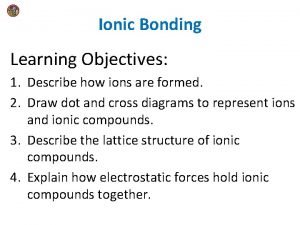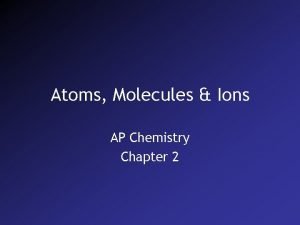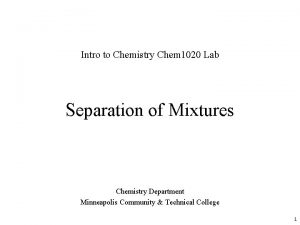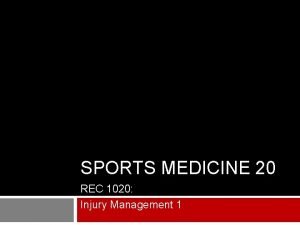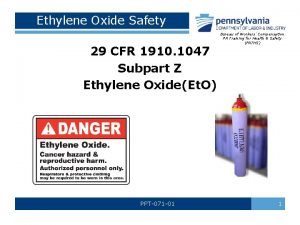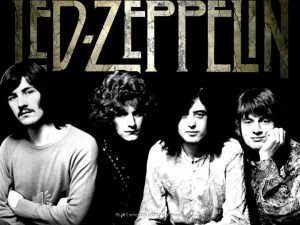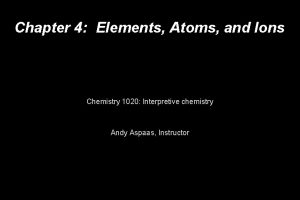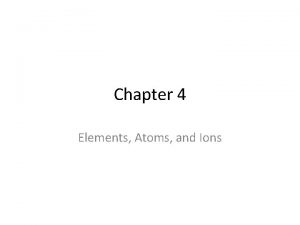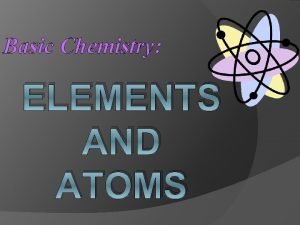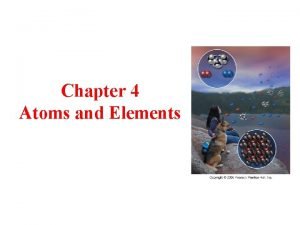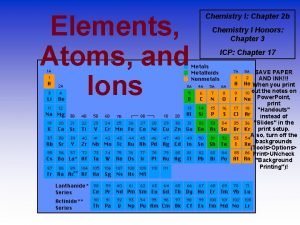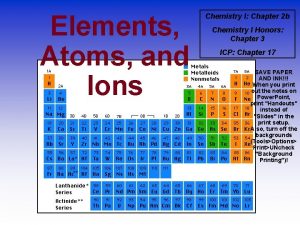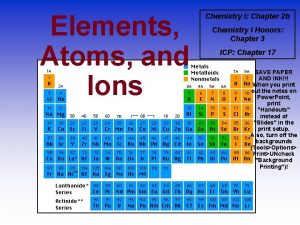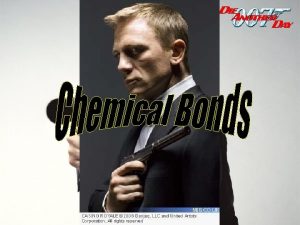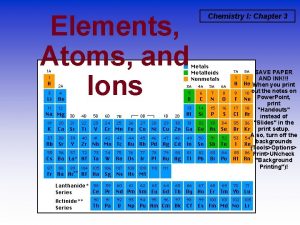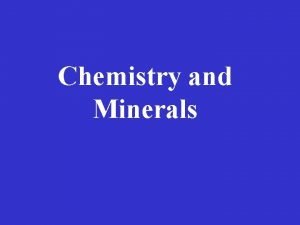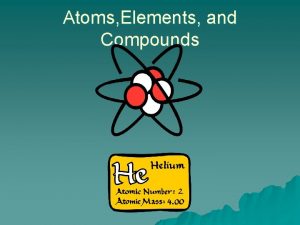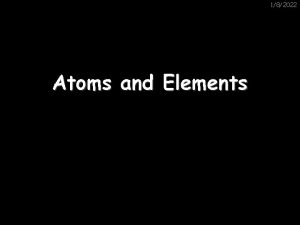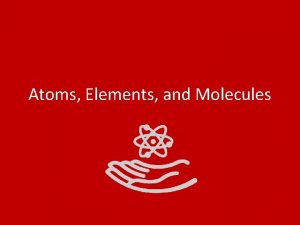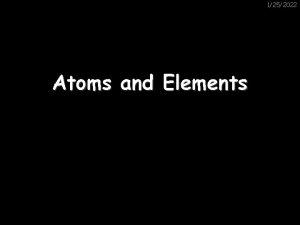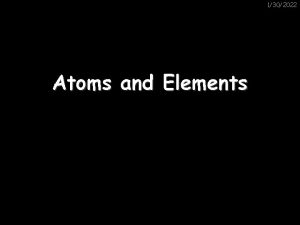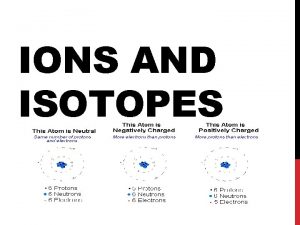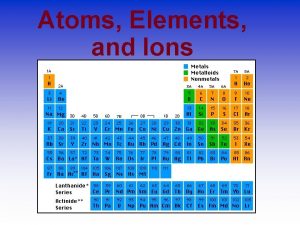Chapter 4 Elements Atoms and Ions Chemistry 1020




















- Slides: 20

Chapter 4: Elements, Atoms, and Ions Chemistry 1020: Interpretive chemistry Andy Aspaas, Instructor

Elements • All substances on earth are made from a combination of 114 or so elements – 88 found in nature, others are man-made • Abundance: % found in nature – Oxygen most abundant on earth & in human body (by mass) – Abundances vary in different parts of environment • Each element has its own symbol – One or two letters - first is always capitalized

Dalton’s atomic theory • According to Dalton: – Elements are composed of tiny unbreakable particles called atoms – All atoms of a given element are identical – Atoms of a given element are different from those of any other element – Atoms of one element combine with atoms of other elements to form compounds – Atoms are indivisible by chemical processes

Conclusions from Dalton’s atomic theory • Law of constant composition – All samples of a pure compound contain the same proportions of the elements – Chemical formulas used to show those proportions • Law of conservation of mass – Atoms are never created or destroyed, only rearranged – Atoms of one element cannot change into atoms of another element – All atoms present at the beginning of a reaction are present at the end

Compounds and chemical formulas • A compound is a pure substance that is composed of atoms of two or more elements • Compounds are described by giving the number and type of each atom in the simples unit of the compound • Each element represented by letter symbol • Quantity of atoms of each element written as subscripts (subscript 1 never written) • Polyatomic groups in parentheses if more than one

Structure of the atom • J. J. Thomson investigated beams known as cathode rays – Made of tiny negatively charged particles called electrons – Smaller than a hydrogen atom! – Atoms of different elements produce the same electrons

Thomson’s plum pudding model • Atoms are indeed breakable, contrary to Dalton’s theory • Electrons are suspended in a positively charged electric field (to balance electrons’ neg. charge) • Mass of atom is due mostly to electrons • Atom is mostly empty space

Rutherford’s gold foil experiment • Tried to prove Plum Pudding model • Shot “bullets” of alpha particles through thin sheet of gold atoms • Expected alpha particles to fire straight through – Most indeed did – But about 2% were deflected by very large angles – Disproved Thomson’s plum pudding model

Rutherford’s nuclear model • Most of atom’s mass is in a tiny dense center called the nucleus – Positively charged – Only 1/10 trillionth the volume of the atom – Nucleus’s positive charge balances electrons’ negative charge • Electrons fly around in the empty space surrounding nucleus

The modern atom • Nucleus composed of two types of particles – Protons: +1 charge – Neutron: 0 charge, mass similar to proton • Electrons: -1 charge, outside of nucleus

Isotopes • Number of protons defines which element an atom is – Called atomic number, found on periodic table • Atoms of an element with different numbers of neutrons are called isotopes • All isotopes of an element behave identically in chemical reactions • But have different masses • Identified by mass number – Mass number = # protons + # neutrons • Isotope symbols contain mass number, atomic number, and element symbol

Elements • Arranged in pattern called Periodic Table • Properties can be predicted based on position in table • Metals – About 75% of elements – Lustrous, malleable, ductile, conduct heat and electricity • Nonmetals – Dull, brittle, insulators • Metalloids or semi-metals – Properties of both metals and nonmetals

Groups and periods • Elements with generally similar chemical and physical properties are in the same column • Columns are called groups or families – Different numbering schemes • Rows are called periods

Regions of the periodic table • Main group = representative elements – “A” columns in label • Transition elements – All metals • Bottom rows: Inner transition elements or Rare earth elements – All metals – Inserted into periodic table after La and Ac

A few important groups • Group 8 A: Noble gases – Colorless gases at room temperature – Non-reactive (inert) – Found in nature as single atoms uncombined • Group 7 A: Halogens – Very reactive nonmetals – Exist as diatomic molecules in nature (Cl 2, Br 2, etc) – React with metals to form ionic compounds

Allotropes • Some solid nonmetallic elements can exist in different forms with different physical properties – Allotropes: these different forms • Different physical properties are from different arrangements of atoms in the solid • Allotropes of carbon: – Diamond – Graphite – Buckminsterfullerene (C 60)

Ions • Ions are atoms or groups of atoms that carry an electrical charge • Cations: positive charge (loss of electrons) • Anions: negative charge (gain of electrons) • Unlike charges attract, so cations and anions are attracted to each other • Electrolytes: ions that dissolve in water and cause it to conduct electricity • Ionic compound: combination of cations and anions that form a pure substance with no total charge

Atomic structures of ions • Metals always form cations • Loss of one electron creates a +1 charge – Na = 11 e-, Na+ = 10 e– Ca = 20 e-, Ca 2+ = 18 e • Cations have same name as uncharged metal • Charge can be determined from group number

Atomic structures of ions • Nonmetals form anions • Gain of 1 electron = -1 charge • Anions named by changing ending of element name to -ide – Fluorine: F + 1 e- = F- (fluoride ion) – Oxygen: O + 2 e- = O 2 - (oxide ion) • Charge determined by taking 8 - group number

Writing ionic formulas • Ionic compound must have no net charge • So change number of ions to cancel out positive and negative charges • Compound made of Mg 2+ and Cl– Must have formula Mg. Cl 2
 Chapter 2 atoms molecules and ions
Chapter 2 atoms molecules and ions What do the roman numerals in a cation's name indicate?
What do the roman numerals in a cation's name indicate? Ion chapter 11
Ion chapter 11 Atoms molecules and ions
Atoms molecules and ions Atoms molecules and ions
Atoms molecules and ions Atoms molecules and ions
Atoms molecules and ions Atoms ions and molecules
Atoms ions and molecules Atoms ions and molecules
Atoms ions and molecules States that atoms ions and molecules must collide to react
States that atoms ions and molecules must collide to react More protons than electrons
More protons than electrons Atoms or ions are considered isoelectronic if
Atoms or ions are considered isoelectronic if Periodic table of elements regents
Periodic table of elements regents Chemistry in biology section 2 chemical reactions
Chemistry in biology section 2 chemical reactions Chapter 6 section 1 atoms elements and compounds
Chapter 6 section 1 atoms elements and compounds Chem 1020
Chem 1020 Castolin brazing
Castolin brazing Chromium etchant 1020
Chromium etchant 1020 Sports medicine definition
Sports medicine definition 29cfr1910.1020
29cfr1910.1020 Cis 1020
Cis 1020 Coinary error 1020
Coinary error 1020









